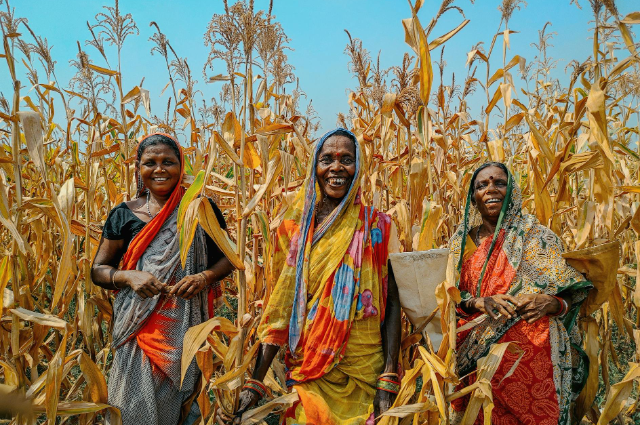
In the heartlands of India, amid forests and rural landscapes, a quiet revolution is underway. Tribal Adivasi women—often marginalized by mainstream society—are carving out new identities and financial independence by harnessing the extraordinary potential of bamboo. Their journey, marked by immense hard work, not only preserves ancient crafts but also fosters community empowerment, environmental stewardship, and women’s solidarity.
The Roots: Bamboo, Tradition, and Struggle
For countless generations, Adivasi communities have lived harmoniously with nature, deriving sustenance from the forests. Among these resources, bamboo holds a revered status. It is woven into tribal homes, utensils, tools, and daily life. Yet in recent times, the rise of plastic and factory-made goods threatened this heritage, pushing bamboo crafts to the margins and exacerbating poverty, especially among women.
But adversity breeds resilience. Across India—from rural Maharashtra and Odisha to Chhattisgarh—the narrative began to shift as enterprising Adivasi women banded together to reclaim bamboo crafts as both heritage and livelihood. Through self-help groups, training programs, and entrepreneurial ventures, these women have elevated bamboo from mere subsistence to a blossoming source of empowerment.
Creating Livelihoods: The Bamboo Handicraft Revolution
Skill Building and Training
A pivotal factor in this transformation has been targeted skill training and collective action. In Maharashtra's Tetwali village, Namita Namdev Bhurkood and her team, inspired by social entrepreneurs, participated in a 30-day bamboo handicraft training session. What began as a pilot to make Diwali kandils (lanterns) soon blossomed—over 700 women across 23 villages are now making bamboo products, marketed across India and abroad.
In Odisha, women from the Kondh and Saura tribes underwent intensive workshops on bamboo jewelry, learning intricate techniques to create necklaces, earrings, and bangles catering to modern tastes. These trainings not only imparted vocational skills but also built confidence and financial independence.
Earning and Economic Independence
Once limited to agriculture and seasonal forest produce, Adivasi women are now earning viable incomes from bamboo crafts, often exceeding traditional earnings. For instance:
- In Maharashtra, women earn an average of ₹9,000/month making bamboo products, balancing fieldwork and home responsibilities.
- In Bastar, Chhattisgarh, eco-friendly bamboo rakhis and jewelry fetch each artisan ₹6,000–10,000/month, a huge leap from mere subsistence farming. Output-based incentives further boost earnings.
- In Odisha, skilled bamboo artisans can make up to ₹15,000/month, with products now sold internationally.
- More than just monetary benefits, these incomes translate into enhanced social status, savings, and the ability to contribute to family and community needs. Women open their own bank accounts, exit cycles of debt, and make household decisions with newfound confidence.
Community Support and Solidarity
The spirit of collectivism runs deep in Adivasi culture. As these women succeed, they uplift others too—training new members, forming self-help groups, and enabling micro-loans within their circle. For example, in Chhattisgarh’s Arjuni village, three women’s self-help groups not only made and marketed bamboo tree guards but also provided emergency financial assistance to members facing illness or family crises.
Beyond Earnings: Planting the Seeds of Sustainability
A remarkable ripple effect of this bamboo revival is environmental stewardship. Realizing the finite supply of wild bamboo, Adivasi women have become champions of plantation drives and sustainable harvesting. For example:
In Chhattisgarh, women’s SHGs won local contracts to make bamboo tree guards, simultaneously generating income and protecting newly planted saplings from grazing animals.
Kolam tribals in Adilabad, Telangana, advocate for extensive bamboo plantation to revive both craft and forest ecosystems. Their appeal to local officials highlights the dual benefit—restoring traditional livelihoods and vital wildlife habitat.
Utilizing local, fast-growing bamboo for crafts has curbed the need for plastic and metal, catalyzing a shift towards eco-friendly, zero-waste lifestyles within the communities they serve.
Inspiring Others and Spreading the Impact
The successes of these enterprising women ripple through their villages:
- Peer Training: Skilled artisans become trainers, passing techniques to dozens of women in neighboring villages. They offer support, encouragement, and a vision of freedom from financial dependence.
- Market Innovations: Artisans experiment with designs, expanding beyond baskets to jewelry, home décor, and festive items, catering to urban and international tastes.
- Changing Mindsets: Young girls, once resigned to migrating to cities for work, now see a future in their own villages, honoring tradition while charting new economic frontiers.
- Perhaps the most profound impact is intangible: the pride of creative expression, the preservation of heritage, and the assertion of women’s agency in shaping their destinies.
Opinion: Why This Matters, and the Road Ahead
The story of Adivasi women and bamboo is not just about crafts or money. It is a paradigm of grassroots empowerment. In a world where women’s labor is often invisible, these artisans prove that hard work, solidarity, and sustainable enterprise can reverse cycles of poverty and ecological decline. They reimagine entrepreneurship as a collective, environmentally conscious force.
However, challenges remain—access to raw materials, fair pricing, and links to larger markets. With government support, public awareness, and conscious consumer choices, these artisans can scale their impact, ensuring that traditional crafts not only survive but thrive in India’s future.
Supporting tribal Adivasi women artisans means supporting not just beautiful crafts but also resilience, sustainability, and equality—values our world sorely needs.
This article is a tribute to the indomitable spirit of India’s Adivasi women—carrying their communities, culture, and the green promise of bamboo, towards a more equitable and sustainable tomorrow.
